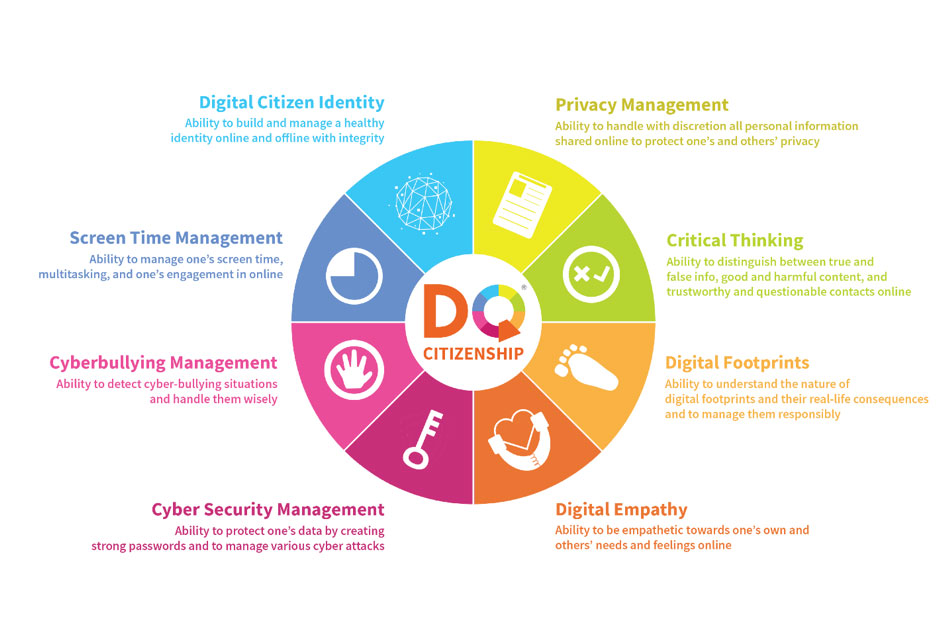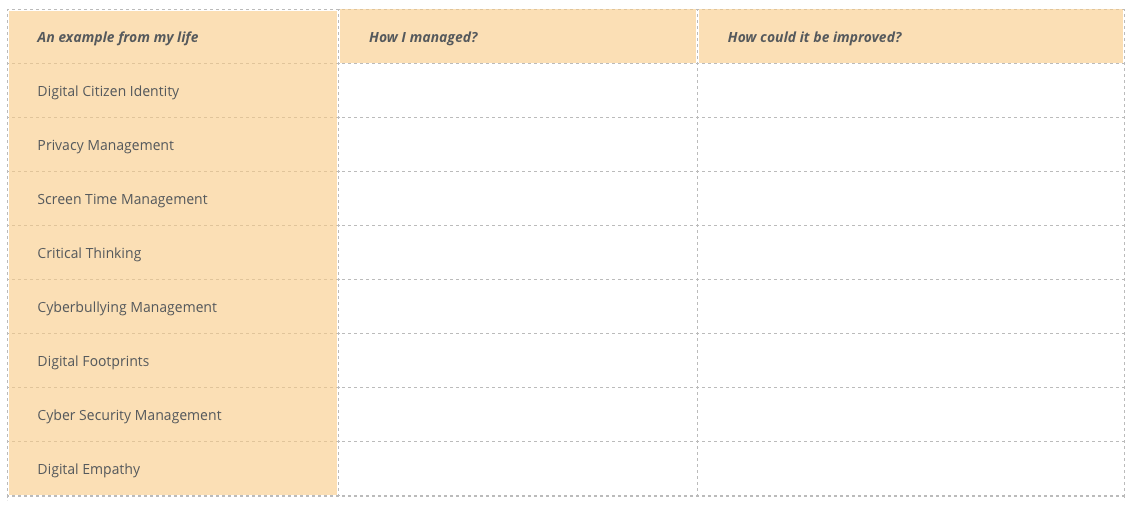Communication
5. Parental involvement as active citizenship
5.2. Digital citizenship activity
| ACTIVITY |
|
|
|
|
Should I do the activity alone? |
It can be done individually, but it is best discussed with other parents |
|
|
After completing the activity… |
I should be able to:
|
|
|
Before I start, what will I need to do this activity? |
Nothing special. |
|
What do I have to do?
1. Look at the infographics on active digital citizenship
2. Think of an example for each slice of the above cake in your life
3. Read the following scenarios and answer the questions, preferably discussing it with other parents
Scenario 1 A new set of government regulations restrict the offer of officially recognised schoolbooks, but teachers are given total freedom of school material they want to use, including books that are not officially recognised, and thus cost much more than recognised ones. The majority of books your school’s teachers used in previous years are off the list. The teachers come together and decide that they want to keep using the books they have good teaching experiences with. They commit themselves to ask parents to buy less books than in previous years, but the full package chosen will still cost parents twice as much as it would have cost the year before and triple the price of a pack of subsidised books would. There is an enrolment issue at the school, so teachers are afraid the demand to pay more for books will trigger an exodus from the school. How would you as a parent at the school would like to be approached by teachers to be persuaded to keep your child(ren) in the school and to pay for the more expensive books? What do you think the role of elected parents’ representatives and teaching staff is in this situation? What happens if you don’t participate in the discussion? How your child(ren) should be involved in these discussions? How could digital tools be part of the solution? Scenario 2 The food on offer in the school/setting cafeteria, while meeting the requirements of a so-called Healthy Eating Lifestyle Plan does not meet the taste of children. Most children bring in sandwich and chips instead of eating at the canteen. Some parents buy microwave ovens for the (class)rooms and the children heat up home-made food in them, eating by their desk or in the corridors. There is a strong demand to provide a longer lunch break so that children can go to a nearby restaurant outside of school for their meals. The age group is 6-10 year olds. Some members of the teaching staff/carers don’t feel comfortable with letting the children out of school during the (school) day regardless the wish of parents and the rights of children to do so. While they understand that they must let the children out of the building anytime, they invite the parents and children to try and find a solution that satisfies most families and also satisfies those teachers who have safety concern, so that they keep as many children in the school building as possible.
|
||
|
|
What to do next? |
|

